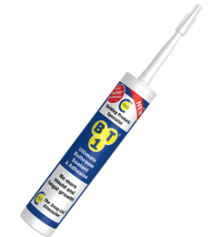any examples of a profiling tool - going to be 45mm wide
I may have a big problem with Silicone, its not been very good in any of our bathrooms , and the otherhalf avoids where ever possible, no idea what was used , i suspect screwfix stuff, I have used CT1 around a kitchen worktop in the past and it was very good - now they have BT1 special for bathroom/wetroom etc, i purchased a while back , when they had a demo in toolstation 1st week it was being introduced to them , i planned to redo all the bathroom shower tray etc

 www.ct1.com
www.ct1.com
no idea if they do black
I may have a big problem with Silicone, its not been very good in any of our bathrooms , and the otherhalf avoids where ever possible, no idea what was used , i suspect screwfix stuff, I have used CT1 around a kitchen worktop in the past and it was very good - now they have BT1 special for bathroom/wetroom etc, i purchased a while back , when they had a demo in toolstation 1st week it was being introduced to them , i planned to redo all the bathroom shower tray etc

BT1 – New TRIBRID Technology for Bathrooms - CT1
BT1 is based on our revolutionary TRIBRID® Technology! We have created a unique product upon which bacteria/microbes cannot survive, making it easier to maintain a more hygienic surface which is free of solvents and isocyanates.
 www.ct1.com
www.ct1.com
no idea if they do black

